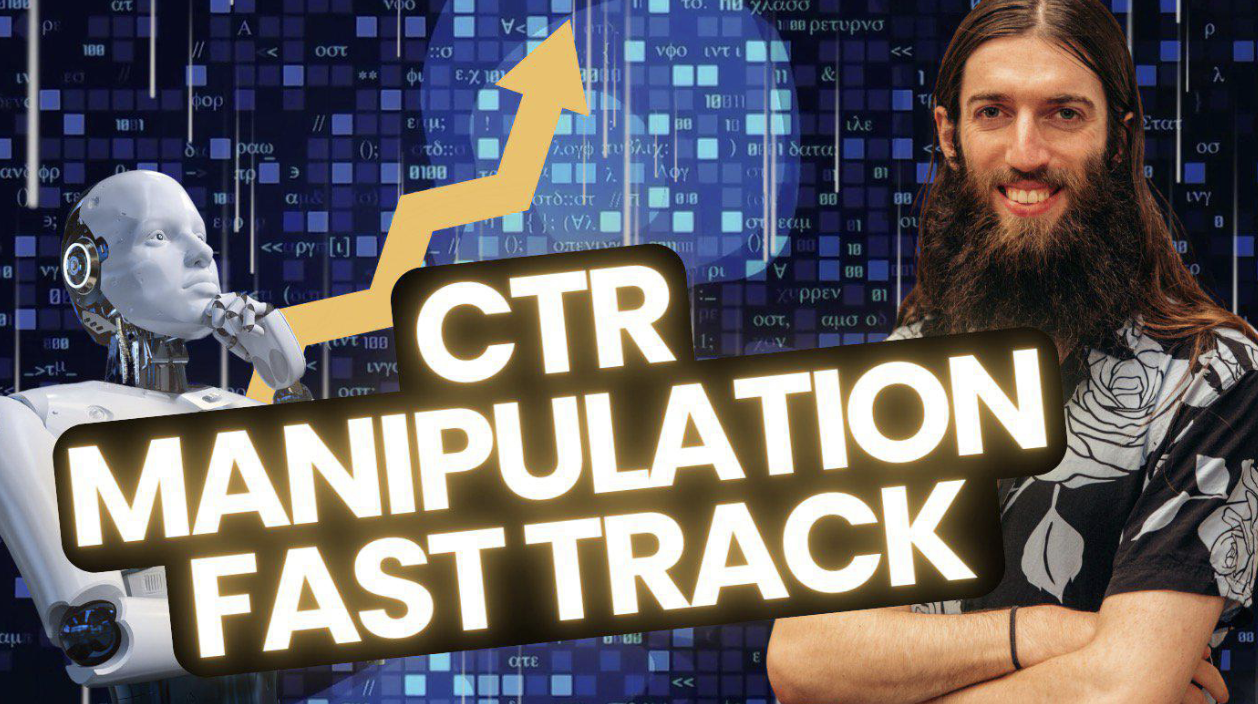CTR Manipulation: Boost Your Click-Through Price with Proven Techniques
CTR Manipulation: Boost Your Click-Through Price with Proven Techniques
Blog Article
CTR Control: A Proven Approach for Better Clicks
The concept of click-through rate (CTR) manipulation has garnered interest as a strategic technique to enhancing electronic advertising and marketing results. As we discover the ins and outs of effective CTR techniques, one must contemplate: exactly how can online marketers stabilize the pursuit of higher clicks with the necessary of preserving trust fund and trustworthiness in their brand name?
Understanding CTR Adjustment
Although click-through rate (CTR) manipulation can be a controversial topic, comprehending its systems is necessary for electronic marketers and system managers alike. CTR is the proportion of customers who click on a particular web link to the complete variety of customers that watch a advertisement, web page, or e-mail . A raised CTR suggests efficient material, while a low CTR may recommend that renovations are essential.
Adjustment of CTR can take place with different methods, such as modifying ad placements, optimizing headlines, or customizing call-to-action language. These methods can skew the regarded performance of campaigns, causing potential misconceptions of individual interaction and behavior.
In addition, CTR adjustment can affect algorithm-driven systems, as these platforms often focus on material based on involvement metrics. As a result, pumped up CTRs can deceive marketing professionals into believing that their strategies are yielding favorable results, possibly wasting sources on inadequate projects.

Methods for Reliable Adjustment
Another method entails using appealing visuals. Incorporating high-quality pictures or video clips can draw customers in, making them more probable to involve with the material. In addition, employing A/B screening allows online marketers to trying out different variations of advertisement images, duplicate, and calls-to-action to figure out which reverberates best with the target market.

Ethical Considerations in CTR Approaches
As marketers explore numerous techniques to improve click-through prices (CTR), it is critical to consider the ethical ramifications of these techniques. Ethical marketing methods prioritize openness, sincerity, and respect for the target market, ensuring that individuals are not misguided by deceptive techniques that may produce short-term gains yet eventually damages brand online reputation.
One major ethical concern emerges from check this site out making use of clickbait headings, which guarantee astonishing web content but supply very little worth. Such practices can wear down trust fund between brands and customers, leading to irritation and disillusionment. Additionally, using deceptive images or manipulating data to develop an incorrect narrative can misrepresent the real benefits of a product and services, questioning about stability.
Customizing content based on customer information webpage can improve engagement, but it should be done with customer authorization and understanding. Striking an equilibrium in between reliable CTR approaches and ethical factors to consider is essential for cultivating lasting connections with clients.
Measuring the Impact of Adjustments
Gauging the influence of adjustments in click-through rates (CTR) is crucial for assessing the performance of advertising techniques. Accurate dimension allows online marketers to determine whether details modifications yield positive results. To successfully analyze these adjustments, it is important to develop baseline metrics before implementing alterations. This involves gathering data on CTR, conversion prices, and other appropriate performance indications.
Once adjustments are made, online marketers need to utilize A/B screening to compare the performance of various approaches. This method permits a controlled atmosphere where one variable is changed while others remain consistent, making it possible for a clearer understanding of the modifications' effect on CTR. Additionally, segmenting information by audience demographics or channels can supply understandings into which segments respond favorably to particular controls.
Routine evaluation of these metrics post-implementation is essential to track progress and identify fads. Utilizing tools such as Google Analytics and heat maps can improve this analysis, supplying a thorough sight of customer actions. By consistently measuring the impact of changes, companies can make informed decisions, optimizing their marketing efforts for improved engagement and ultimately driving better efficiency throughout campaigns.
Long-Term Advantages of CTR Adjustment
The lasting benefits of click-through price (CTR) adjustment extend beyond instant engagement metrics, fostering continual development and enhanced brand visibility. By strategically improving CTR, companies can cultivate a loyal target market base, as greater interaction usually translates to increased trust fund and reliability. This trust can promote client retention, eventually leading to greater conversion prices gradually.
Moreover, boosted CTR signals to online search engine and social platforms that content is pertinent and useful, which can enhance natural reach. As algorithms focus on high-performing material, brands that continually attain raised CTRs are more probable to take advantage of enhanced presence in search outcomes and advised feeds.
In the context of electronic advertising, a higher CTR can likewise result in lower consumer procurement this link prices. As campaigns come to be much more reliable, companies can allocate resources a lot more efficiently, taking full advantage of roi.
Verdict
To conclude, CTR manipulation stands for a valuable approach for boosting click-through rates through different techniques such as maximized headlines and customized material. While the capacity for raised involvement is significant, ethical considerations need to assist these strategies to guarantee trust fund and credibility are maintained. By methodically determining the influence of adjustments and concentrating on lasting advantages, organizations can properly utilize CTR manipulation to promote sustained client commitment and help with brand name growth in a progressively affordable electronic landscape.
The concept of click-through rate (CTR) adjustment has actually gathered interest as a critical method to boosting digital advertising and marketing results.Although click-through price (CTR) adjustment can be a controversial topic, recognizing its systems is important for digital marketing experts and system administrators alike. An elevated CTR indicates effective content, while a low CTR might recommend that improvements are necessary.
Using calculated methods for efficient CTR adjustment can substantially boost user engagement and campaign performance.In conclusion, CTR adjustment stands for a useful technique for boosting click-through prices through various methods such as optimized headlines and personalized web content.
Report this page